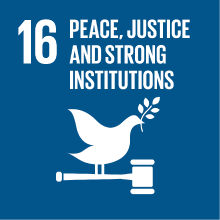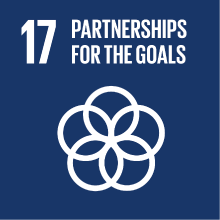THE CITY IN THE ISLAMIC WORLD
- Academic year
- 2022/2023 Syllabus of previous years
- Official course title
- LA CITTÀ NEL MONDO ISLAMICO
- Course code
- LM2210 (AF:376586 AR:212520)
- Teaching language
- Italian
- Modality
- On campus classes
- ECTS credits
- 6
- Degree level
- Master's Degree Programme (DM270)
- Academic Discipline
- L-OR/11
- Period
- 2nd Semester
- Course year
- 1
- Where
- VENEZIA
- Moodle
- Go to Moodle page
Contribution of the course to the overall degree programme goals
Expected learning outcomes
Pre-requirements
Contents
The legacy of the tradition and the innovations (for example: the abandonment of the orthogonal model, the introduction of the citadel) will be discussed in the context of the new society shaped by major political, economic, social and cultural elements. An attempt will be made to identify a semiotics of urban and domestic space specific to Islamic societies. The detailed study of four major capitals will make it possible to analyse a broad spectrum of forms and dynamics: Cairo, Dubai, Istanbul, Cordoba.
The course will also deconstruct the concept of the 'Islamic city', from the nineteenth-century 'orientalist' vision to its contemporary formulations. The contrast between the Islamic city and the colonial city will be brought into focus
Referral texts
J. Abu-Lughod, The Islamic City: Historical Myth, Islamic Essence, and Contemporary Relevance, International Journal of Middle East Studies 19 (2) 1987, pp. 155-176
M. Apaydin, Islamic city: a rhetorical argument or a political tool?, Al-Machriq V. 89/1, 2015, pp. 313-328
Gideon Avni, “From Polis to Madina” Revisited – Urban Change in Byzantine and early Islamic Palestine, JRAS, Series 3, 21, 3 (2011), pp. 301–329
Jere L. Bacharach, The court-citadel: an Islamic urban symbol of power, in Urbanism in Islam III, Tokyo 1989, pp. 206-245
D. Behrens-Abouseif, S. Denoix, J.-Cl. Garcin, Le Caire, in Grandes villes méditerranéennes du monde musulman médiéval, Roma 2000, pp. 177-203
Doris Behrens-Abouseif, The Mamluk City, in AAVV, The City in the Islamic World, Leiden and Boston 2008, pp. 295-316
P. Cuneo, Storia dell’Urbanistica: Il mondo Islamico, Bari 1986, pp. 368-378
Deeba Haider, The growing pains of Dubai: a city in search of its identity, in AAVV, The city in the Islamic World, Leiden and Boston 2008, pp. 1063-1084
H. Inalcik, Istanbul, EI2: solo gli argomenti trattati, e cioè paragrafi 2-5
H. Kennedy, From polis to madina. Urban change in late antique and early Islamic Syria, Past and Present 106, 1985, pp. 3-27
Hugh Kennedy, From Polis to Madīna revisited: Some Reflections Thirty Years On (2018) (file word) https://books.openedition.org/cvz/23597
Doğan Kuban, Istanbul, an Urban History, Istanbul, 2010 (biblioteca)
Keith Olroyd-Robinson, The urban architecture of al Bastakiyyah, in Salma Samar Damluji (ed.) The architecture of the Arab United Emirates, Reading (UK) 2006, pp. 179-196
S. Pradines, Les murailles du Caire, de Saladin à Napoléon, CRAI 2012/II, pp. 1027-1063
André Raymond, Le Caire, Paris, 1993 (biblioteca)
Sharon Rotbard, White City, Black City: Architecture and War in Tell Aviv and Jaffa, London 2015: capitoli scelti.
A.F. Sayyed e R.-P. Gayraud, Fustat-Le Caire à l’époque fatimide, in Grandes villes méditerranéennes du monde musulman médiéval, Roma, 2000, pp. 135-156
Serena Vicari, Che cosa è la città, Dispensa di Sociologia, Milano Bicocca
S. Yerasimos, Istanbul, VIII. Monuments, EI2 supplementi
Alan Walmsley, Urbanism at Islamic Jerash: new readings from archaeology and history, in Achim Lichtenberger, Rubina Raja (eds) The archaeology and history of Jerash, Turnhout (Brepols), 2018, pp. 241-256
Assessment methods
A. 35% of final mark
The student is required to submit an essay at least one week before the day of the oral examination, on a city of his/her choice with the previous agreement of the teacher.
In this work the student will have to show that he/she has acquired the necessary critical skills and tools to face the study of a city in the Islamic world, and to define its characteristics in relation to the interpretative models that had been proposed.
B) 65% of final mark
At the oral examination the student will be required to illustrate the topics treated in the course of the lectures, with the help of images.
This part of the exam aims to verify that the student has acquired a basic knowledge of the history of the studies, of the development of the four capitals examined in detail and about the main problems related to them.
Type of exam
Teaching methods
Further information
2030 Agenda for Sustainable Development Goals
This subject deals with topics related to the macro-area "International cooperation" and contributes to the achievement of one or more goals of U. N. Agenda for Sustainable Development


